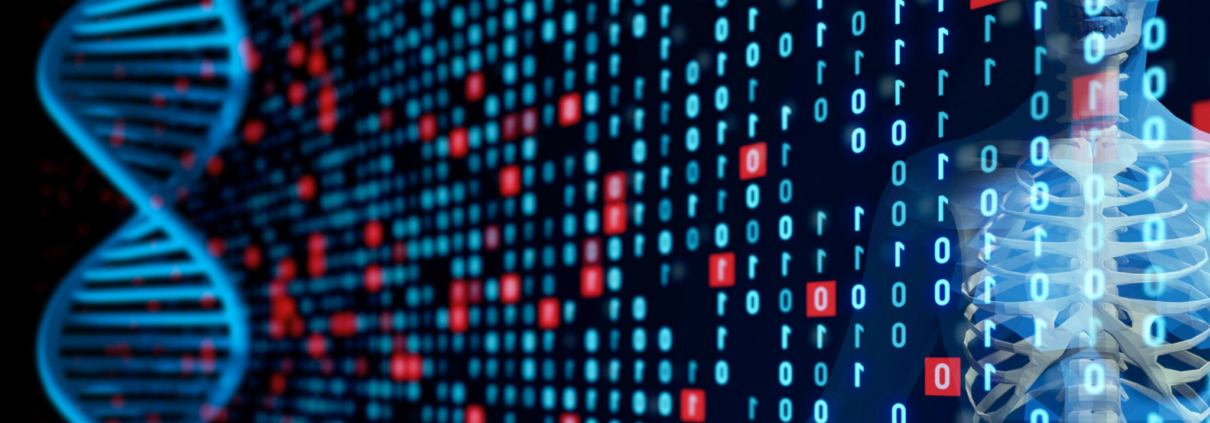Understanding rare genetic disorders and how to treat them
More than one-third of our genes—roughly 9,000 of some 25,000 genes—are known to cause disorders. Even rare disorders, of which there are more than 10,000, affect some 25–30 million Americans.
If you or someone you love has dealt with a rare genetic disorder, you’re far from alone. From Huntington’s disease to spinal muscular atrophy, here’s what to know about this wide-reaching category, how to seek diagnosis, and what treatments can help.
What are genetic disorders?
Genetic disorders occur when one or more of a person’s genes have mutated, duplicated, or gone missing entirely. Some genetic disorders follow classic Mendelian genetics—a parent (or both) carries a mutated gene and passes it on to his or her children.
Put simply, there are three types of mutations:
- Single-gene mutations: In these mutations, one copy of a mutated gene causes the genetic disorder. In instances of autosomal dominant inheritance such as Huntington’s disease, one parent carries the gene mutation; in instances of autosomal recessive inheritance such as cystic fibrosis, both parents carry the gene mutation.
- Chromosomal mutations: These mutations involve missing, extra, or irregular portions of chromosomes, such as Trisomy 21 in Down syndrome. Both X-linked and Y-linked disorders exist.
- Mitochondrial mutations: As only women pass on the non-chromosomal DNA of mitochondria, these mutations occur when the mother passes on mitochondrial variants to her children.
From here, genetic disorders get far more complex. Take ataxia, a degenerative disease which results in loss of coordination, from stumbling to slurred speech. Between 300–400 genes are at play, said Dr. Margit Burmeister, associate chair and professor in Computational Medicine and Biopharmatics at the University of Michigan and research professor at the Michigan Neuroscience Institute.
“Each one mutated [gene] can cause ataxia,” she explained, “and we’re still finding new genes.”
Understanding complex genetic disorders
According to Burmeister, genetic disorders you can see in your parents are the simplest to understand, but many genetic disorders aren’t so straightforward.
“Most complex genetic disorders—like depression and the psychiatric disorders—have what is called additive inheritance,” she said. “It’s neither what we learned in school as dominant or recessive.”
Instead, complex genetic disorders often involve multiple gene mutations interacting with the environment at hand. Some gene mutations will only increase risk in a certain environment, but not another. The complexity goes even further: “There’s some evidence in depression studies where the so-called risk allele, or the risk form of the gene,” said Burmeister, “will be risk-increasing in one environment and risk-decreasing in another.”
In other words, genetic disorders are not always immutable destiny. Our epigenome, the cells that control gene activity without changing DNA, is responsive to external stimuli, such as diet, stress, and chemical pollutants. Even some Mendelian disorders can be subject to epigenetic processes, with downstream effects on cognitive and behavioral functioning. In the case of certain neurodegenerative diseases, emerging evidence argues that epigenetic mutations can happen quickly—and even be reversed.
Diagnosing genetic disorders
The first step to understanding likelihood of a genetic disorder is knowing your family history.
From there, a doctor or a genetic counselor can determine if a genetic test is in order. Tests detect changes in chromosomes, genes, or proteins and may involve samples of blood, hair, skin, saliva, amniotic fluid, or other tissue. Types include:
- Molecular tests: Molecular tests vary widely in scope. For certain suspected disorders, a single gene may be targeted; for others, a wide-ranging gene panel, such as whole exome sequencing, may be recommended.
- Chromosomal tests: Like the name implies, chromosomal tests analyze chromosomes and long lengths of DNA to identify irregularities.
- Biochemical tests: As certain genes produce enzymes and proteins, biochemical tests can sometimes determine genetic disorders without directly analyzing DNA.
Unfortunately, testing is not always definitive—or quick.
“Results might only give a 30 percent positive rate, but there still could be high suspicion it’s genetic,” said Dr. Bryn Webb, associate professor in the Division of Genetics and Metabolism at the University of Wisconsin School of Medicine and Public Health. In patients with prolonged diagnostic odysseys, said Webb, diagnosis can take up to five years. “Our interpretation can change as we gain more knowledge,” she noted, adding that scientific advances happen nearly every day. “We typically tell patients they can consider reanalysis in about two years.”
Treating genetic disorders
Genetic disorders are a sweeping category. Because of this, treatments vary widely—and new methodologies are advancing each year. While most of these disorders cannot be cured, alleviation is possible in just about all cases. Here are some of the most common treatment approaches today:
- Symptomatic treatment: This approach focuses on alleviating symptoms and improving quality of life. For example, physiotherapy and respiratory treatments are crucial for managing cystic fibrosis.
- Medications: Medications can assist in managing symptoms or slowing disease progression. For example, Tetrabenazine helps control involuntary movements in Huntington’s disease, while Ivacaftor reduces the accumulation of mucus in the lungs for those with cystic fibrosis.
- Surgery: In some cases, surgery may be necessary to correct physical abnormalities or manage complications, such as heart defects associated with Down syndrome.
- RNA therapy: Techniques like RNA interference (RNAi) can be used to silence defective genes. Spinraza, an antisense oligonucleotide, is used to treat spinal muscular atrophy by modifying RNA to increase the production of a deficient protein.
- Gene therapy: This emerging treatment aims to correct defective genes responsible for disease development via inserting, altering, or removing genes within an individual’s cells. For blood disorders such as sickle cell anemia, Burmeister said gene therapy may become increasingly common in the future.
Even for classic genetic disorders—and those without cures—a healthy environment plays a key role, said Burmeister. Those with genetic disorders can find relief in lifestyle modification, and it’s an important message in terms of prevention, too. From prescribed diets to physical therapy and exercise, “it’s all the same good things that help all of us live healthier lives.”
This article has been factchecked. For more about that process, click here.









